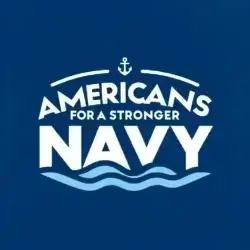
Overview
The United States is increasing its forward military presence near China by deploying Marine forces aboard the expeditionary sea base ship USS Miguel Keith. This afloat platform extends the reach of the Marine Rotational Force-Darwin (MRF-D), based in northern Australia, across the contested island chains of the western Pacific. This move underscores Washington’s commitment to countering Beijing’s growing influence and military footprint in the Indo-Pacific.
The Island Chain Strategy
At the heart of this deployment lies the U.S. island chain strategy: three north-south defensive lines stretching across the Pacific. By leveraging allied territory and naval access points, the U.S. can project power, deter aggression, and defend against potential Chinese military action. The second island chain, where the USS Miguel Keith is homeported in Saipan, plays a pivotal role in supporting operations deeper into the Pacific.
Why This Matters
Operating from a sea base offers the Marines flexibility and unpredictability. Unlike fixed land bases, the Miguel Keith allows U.S. forces to maneuver rapidly across archipelagic terrain and forward locations ashore, complicating adversary planning. This is especially important at a time when Chinese forces are building out anti-access/area-denial (A2/AD) capabilities designed to push U.S. forces farther from contested waters.
Recent Exercises
The deployment follows recent exercises across the first and second island chains:
- Exercise Alon 25 in the Philippines (August 15–29).
- Exercise Super Garuda Shield 25 in Indonesia (August 25–September 4).
These multinational drills reinforced cooperation with allies, improved readiness, and signaled a unified front in the region.
Implications for the Navy
The Navy’s role in enabling sea-based expeditionary operations is central. With amphibious ships like the USS New Orleans temporarily out of service due to fire damage, expeditionary sea bases provide a critical stopgap. They allow Marines and sailors to continue distributed operations, demonstrating the Navy’s adaptability in keeping forward presence credible.
Implications for Our Allies
For Australia, the Philippines, and Indonesia, U.S. deployments reinforce security guarantees. The Marines’ message, as articulated by Colonel Jason Armas, was clear: America and its allies “stand ready to maneuver, sustain and fight as one force.” This is reassurance at a time of rising Chinese assertiveness in the South China Sea and beyond.
Why Americans Should Care
This is not simply a faraway deployment. The Pacific is a lifeline for U.S. trade, energy, and global communications infrastructure. Securing these waters ensures that Americans at home continue to benefit from stable supply chains and open sea lanes. A failure to hold the line in the Pacific would ripple into our economy and national security alike.
Closing Call
As the U.S. strengthens its presence in the Indo-Pacific, the question is not whether we can afford to maintain this posture, but whether we can afford not to. A stronger Navy and Marine Corps presence ensures deterrence, protects trade, and preserves peace.
That’s why we launched Charting the Course: Voices That Matter — a 24-part educational series breaking down how we got here, what went wrong, and what must happen next. Our goal is simple: educate the public, connect the dots, and build the support needed to close the readiness gap before it’s too late.
Let’s roll.

